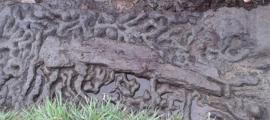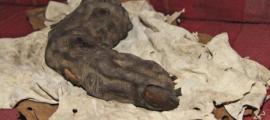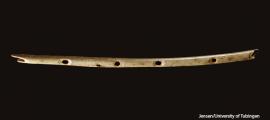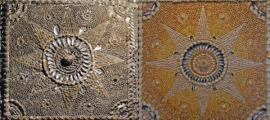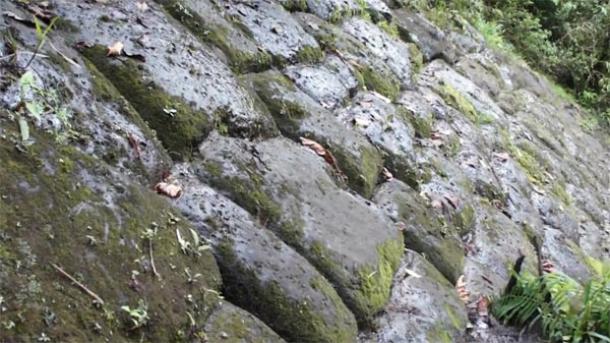
Have explorers in Ecuador found ‘Lost City of Giants'? – Part 2
Further to the article published a few days ago relating to the discovery of a pyramid structure in the Ecuadorian jungle, author and researcher Bruce Fenton has released further details about this intriguing finding, along with more photographs which you can view here.
During the investigation, soil was cleared from the side of a large hill to reveal what appear to be cut and dressed stone blocks. Their surface is quite smooth and barely aged as a result of a protective layer of earth covering them. On another side of the pyramid structure, the wall is already exposed, revealing stones which are weathered and eroded compared to those still covered in soil. This supports the hypothesis that, if man-made, it is a truly ancient site, much older than others already known in Ecuador. Fenton has hypothesised that an earthquake or tropical rainstorm induced a land slide that caused the soil and plants of one wall to come sliding down.
The blocks range in shape and size across the pyramid wall. It appears highly chaotic in style and if man-made, would have posed interesting construction problems for the engineers and builders of the time it was built. The stonework resembles that seen at other ancient sites in Peru, for example the fort at Saksaywaman, which although attributed to the Inca is actually claimed by local Indians to have been built by an ancient people who had the ability to soften the rocks with a plant-derived material.
Between the blocks there is a hard bonding substance like cement or concrete. It is generally held that the Inca did not use mortar but rather made blocks that would fit perfectly together. Yet in this case there appears to be a bonding material remaining between some of the large cut stone blocks. However, a closer look reveals the possibility that it could also be some kind of vitrified material. Evidence for other examples of vitrified stone has been seen elsewhere at ancient sites in Latin America.
The investigators of the site also found what appear to be very large tools which would have been extremely difficult for a normal sized human being to use, which has led Fenton to suspect that this is one of the legendary lost cities of the giants, well known in local Ecuadorian legends about the Amazonian area. Local legends pertain to giant humans who lived in cities that have become forgotten in the pages of history. In fact bones of giant people have been found in caves in the area – as well as in other parts of Ecuador.
The tools appear to be extremely oversized hammers, or at least the stone hammerheads. Assuming these were attached to hard wood handles they would be of both incredible size and weight, making their use as tools impractical for a typical Incan or indigenous Indian, who were generally very slightly built people with an average height of around five feet.
In the video found on Fenton’s site, you can view the footage of the never before seen large pyramid structure located in the jungles of Central Ecuador.



